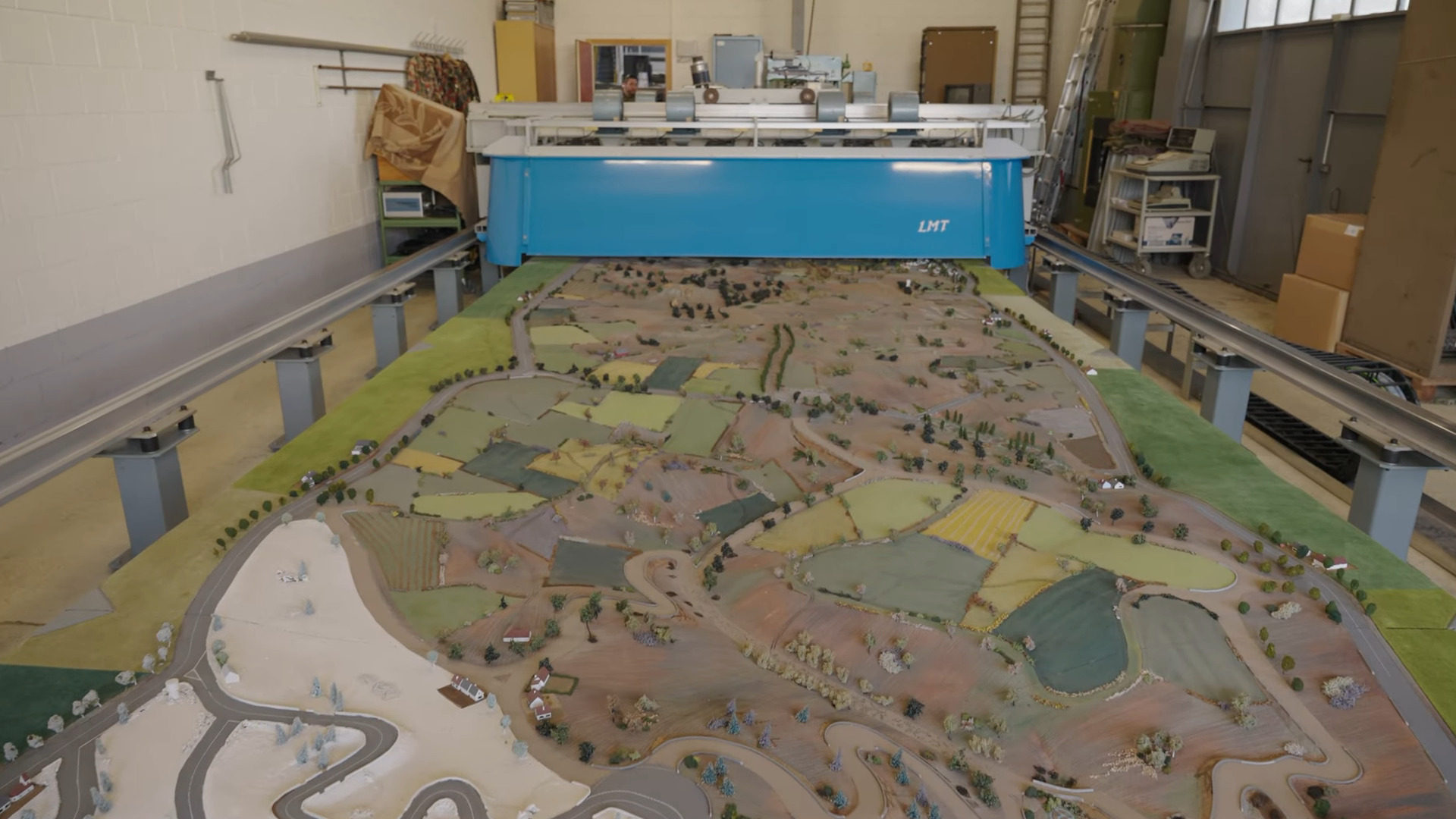
YouTuber Tom Scott got hands-on with the analogue simulator in his latest video.
We take simulators for granted these days. As I write this, I am no more than two clicks away from a meticulous recreation of trucking, flight, powerwashing, PC building, and so much more. But that wasn’t always the case. Back in the day, if you wanted a risk-free way to experience something, you had to build an enormous and costly contraption to imitate it, like the 1970s tank simulator at the Military Museum in Full, Switzerland.
The simulator is the last of its kind in the world, and Tom Scott, who I think of as a kind of science elf that lives in the YouTube algorithm, got a chance to try it out. Using the thing is an involved process: you need to equip a throat mic and a headset, then lower yourself into a giant metal container, at which point you come face-to-face with a load of wheels and whirligigs that represent the innards of a tank.
The tank’s tiny portholes are linked up with a camera affixed to what is, in essence, a toy tank on a toy map. It’s moved around by a robotic arm that pushes the tiny model around based on the inputs the user makes in their big metal coffin.
It works well, which you’d expect from a device that was actually used to train tank drivers. When Scott drives over a bunch of logs, the hydraulics of the simulator kick in to throw him around, when he shifts gear, there’s a jolt in the machine and the arm starts pushing the tank faster. It’s both incredibly impressive while at the same time making me very glad for my PC.
Back in the day, the simulator was governed by a bulky 1970s computer, but the museum wasn’t able to scrounge together the parts to rebuild that bit when they reconstructed the device. So now the entire thing runs off of a Raspberry Pi instead.
It’s an incredibly cool machine, and if I ever inexplicably find myself in Full, Switzerland, I’ll make it a priority to go and see it. For now, though, I think I’m content to just download Euro Truck Simulator on Steam and recline on the sofa. Maybe I’m spoiled.



